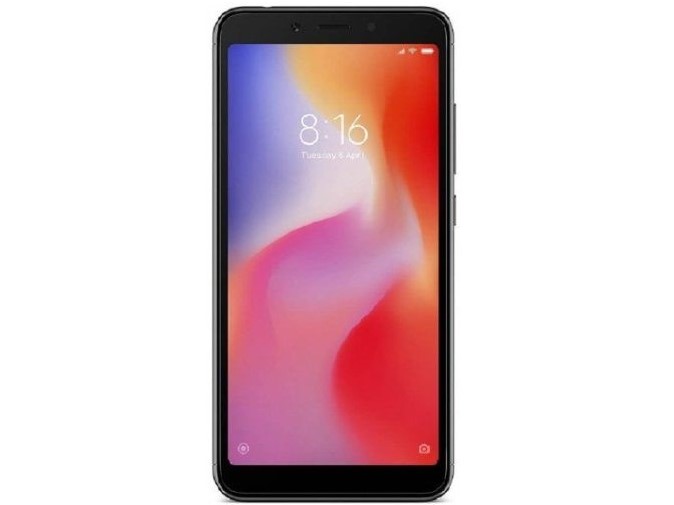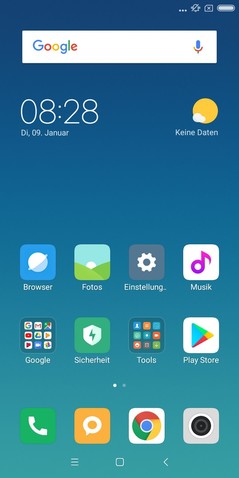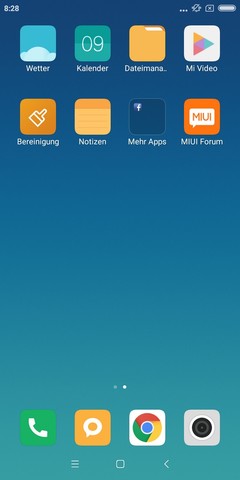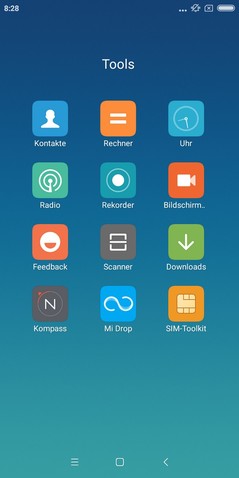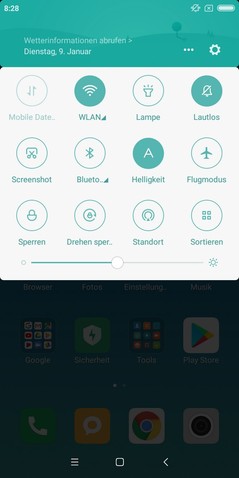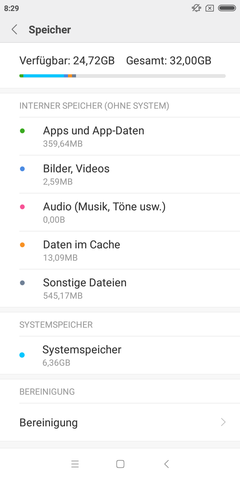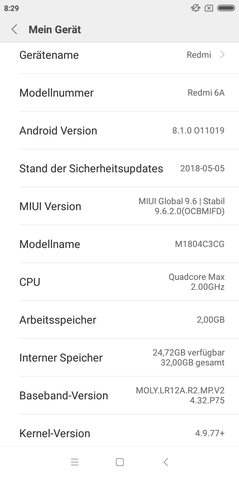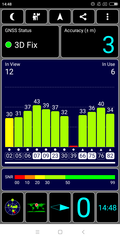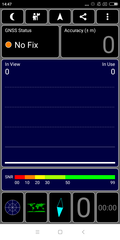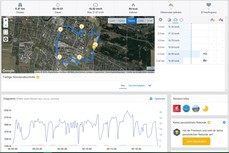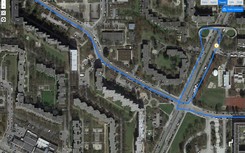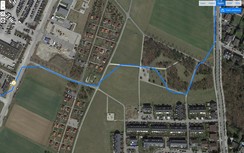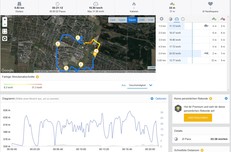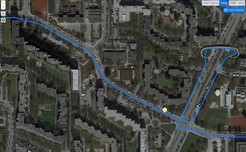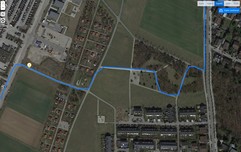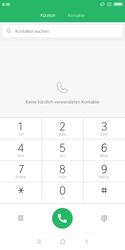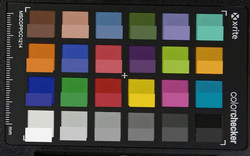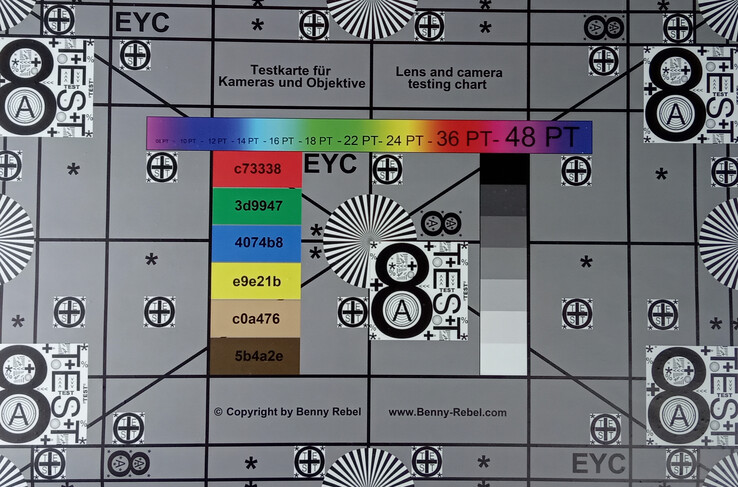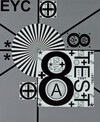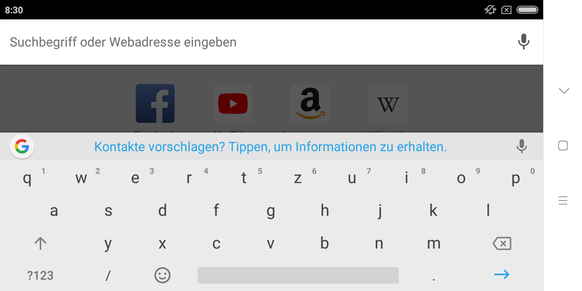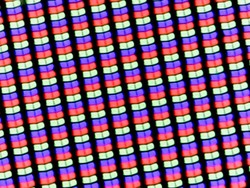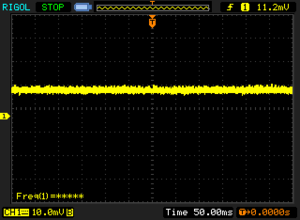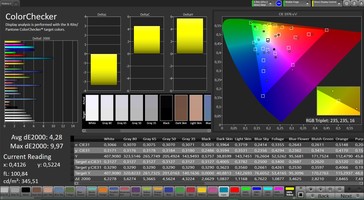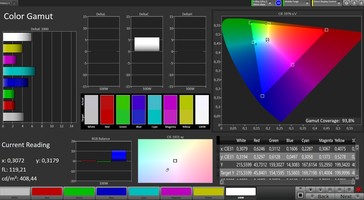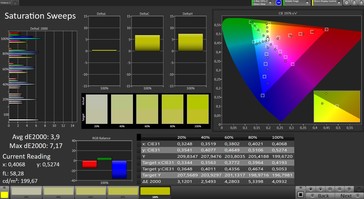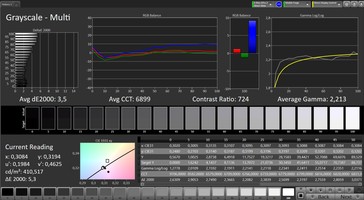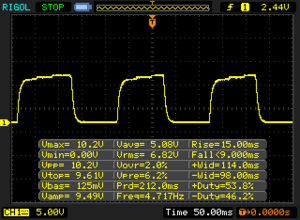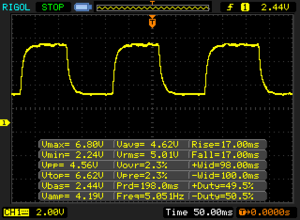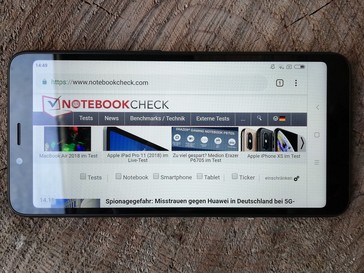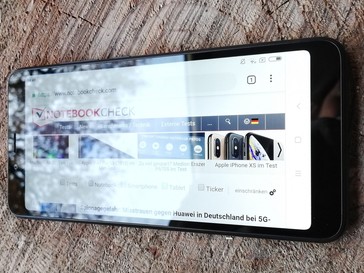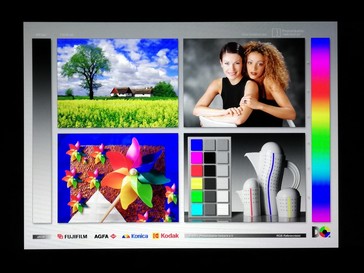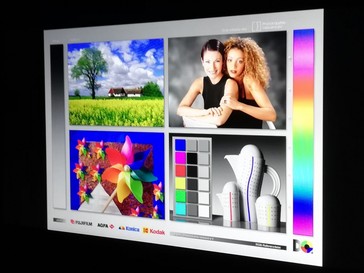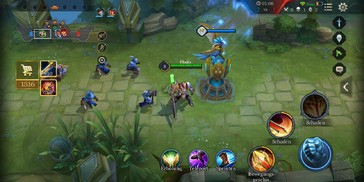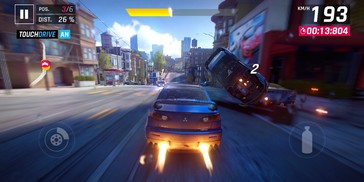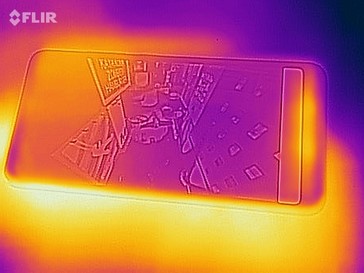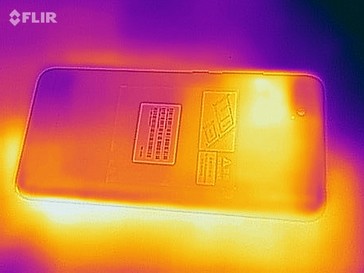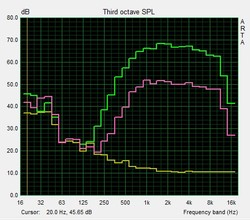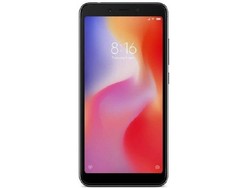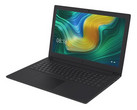Xiaomi Redmi 6A Smartphone Review

With the Xiaomi Redmi 6A, the manufacturer continues to make consistent strides in the area of affordable smartphones. With the new, efficient Mediatek Helio A22 SoC and its integrated PowerVR GE8320 graphics unit, 2 GB of RAM, and 32 GB of internal eMMC flash storage, it offers slightly more performance than the predecessor model. While the camera equipment remained the same, its software was slightly improved. For an additional cost of about 15 Euros (~$17), the Redmi 6A is also available with 3 GB of working memory.
In our test, we not only compare the Redmi 6A with its predecessor, the Xiaomi Redmi 5A, but also with other affordable smartphones from the competitors. We select the similarly affordable Gigaset GS100, LG K11, and Nokia 3.1 as comparison devices. All the competing devices lie within a similar price range and offer sufficient performance for simple applications.
Case - Robust smartphone made of plastic
Xiaomi has manufactured the case of the Redmi 6A from plastic, delivering high-quality workmanship. The gaps in the transition between the case and display are hardly noticeable, and all the keys sit tightly in the frame. The trays for the NanoSIM and microSD cards also fit tightly into their slots. With its rounded corners and edges, the Xiaomi smartphone fits comfortably in the hand.
Buyers of the Xiaomi Redmi 6A have the choice between black, gray, blue, and golden colors.
Equipment - An affordable smartphone for simple apps
Xiaomi has equipped the Redmi 6A with the relatively new Mediatek Helio A22 SoC. In combination with its integrated PowerVR GE8320 graphics unit, 2 GB of RAM, and 32 GB of internal storage, the available performance is sufficient for simple applications and also offers some reserves for the occasional use of slightly more demanding apps. The internal storage can be expanded by using a microSD card without the user then having to forego use of the second NanoSIM card slot. Since the Redmi 6A offers two separate SIM card slots, it allows dual-SIM operation in combination with a storage card.
There is a Micro-USB connection for wired data transfer. Internally this is connected via the USB-2.0 standard and offers OTG functions to connect external storage, for example. In addition, there is a 3.5-mm audio port.
Software - Xiaomi smartphone with MIUI 9.6
The Xiaomi Redmi 6A presents an Android Oreo version 8.1 system with security patches on the level of May 5, 2018 to the user. The user interface is the manufacturer's own MIUI, which is the global version 9.6.2 in our test unit. Adjustments are limited to changed icons and the settings menu is sorted differently. The structure is clear and easily comprehensible for beginners as well as those familiar with Android. Xiaomi holds back in terms of installing third-party apps. Only the Facebook app is installed on the Redmi 6A, but you can easily uninstall that in the settings.
If several users need access to the Xiaomi Redmi 6A, you can create several accounts in the users setting.
Communication and GPS - Android smartphone with LTE
The Xiaomi Redmi 6A is able to connect to the GSM, 3G, and LTE networks. The latter can be done with LTE category 4, allowing download speeds up to 150 Mb/s and upload speeds up to 50 Mb/s. The LTE function is supported by both SIM card slots. However, interested buyers should be aware that only the global version of the Redmi 6A supports the LTE band 20, which is widespread in Germany.
For wireless communication at close range, Bluetooth 4.2 and WLAN with the b/g/n standards are available. Thus the Redmi 6A is only able to create WLAN connections in the 2.4-GHz band. In our test with the Linksys EA8500 reference router, the Xiaomi smartphone is surpassed by some of its competitors, only reaching a place in the middle of the comparison field with its data transfer rates of about 56 Mb/s.
| Networking | |
| iperf3 transmit AX12 | |
| Nokia 3.1 | |
| Gigaset GS100 | |
| LG K11 | |
| Xiaomi Redmi 6A | |
| Xiaomi Redmi 5A | |
| iperf3 receive AX12 | |
| Nokia 3.1 | |
| Gigaset GS100 | |
| Xiaomi Redmi 6A | |
| Xiaomi Redmi 5A | |
| LG K11 | |
Using the GPS Test app, we evaluate how accurately the Xiaomi Redmi 6A is able to determine its own location. Outdoors, locating is possible with an accuracy of up to three meters (~10 ft). However, the Android smartphone is unable to create a satellite connection indoors.
On our mandatory bike tour, we also compare the Redmi 6A with our Garmin Edge 520 reference device. Over long straight stretches, the recorded route corresponds relatively accurately to our actual route. However, the Xiaomi smartphone is unable to reliably record tight curves or sudden changes of direction, and we can often see some jumps, making the GPS in the Redmi 6A only suitable for simple navigation tasks.
Telephone Functions and Voice Quality - A good connection with the Redmi 6A
The Telephone app of the Xiaomi Redmi 6A offers direct access to a dial pad and recently called numbers. In a second tab, you can look at your contacts and select them. During the phone conversation, the Android smartphone shines with a good reception and clear voice quality. The volume is sufficient for most surroundings, but understanding can become difficult on a noisy street. However, some of the noises can be suppressed, which benefits the conversation quality.
Cameras - A smartphone for snapshots
The Xiaomi Redmi 6A offers a 13-MP main camera with an f/2.2 aperture and a 5-MP front camera, also with an f/2.2 aperture. The latter allows you to create selfies of an acceptable quality. In normal light conditions, portraits look very pale and softened by blurriness, but you can still recognize fine structures and the objects are clearly delineated even in dark areas. You can select various color filters and beauty effects in the camera app. These range from larger eyes and a smaller chin up to softer skin. However, there is no professional mode for the front camera.
The main camera offers good snapshots for the occasion. In imbalanced light conditions, the selected object is slightly overexposed, with objects in darker image areas being hardly recognizable. While straight edges are reproduced clearly, uneven color transitions appear slightly muddy. The overexposure is also affecting close-ups. In addition, colors appear slightly pale here. The more balanced light conditions in our test picture show that objects in dark image areas are slightly more recognizable. In bad light conditions, the selected object reproduced by the camera of the Redmi 6A becomes blurry. While the objects still remain recognizable, larger areas of the image disappear in darkness. Besides various color filters, you can also select a professional mode in the settings of the camera app. This allows you to manually adjust the values for white balance, manual focus, exposure, and ISO values.
The video function offers a similar quality as our test photos, but you cannot make any manual adjustments here. Instead, the menu offers a time-lapse mode.
Using the ColorChecker passport, we evaluate the color accuracy of the Redmi 6A camera. It shows, that all the colors are reproduced too dark through the color bank. This effect is similar for dark gray and black tones.
Under controlled light conditions, the Xiaomi smartphone is able to reproduce our test chart well, maintaining the details and fine structures. However, the lower corners are slightly pale.
Accessories and Warranty - Xiaomi Redmi 6A with 24 months of warranty
Included with the Redmi 6A are a USB charger with the corresponding Micro-USB cable and a SIM tool. Xiaomi does not offer any additional accessories, but you can order generic smartphone accessories such as Bluetooth headsets and power banks on the website of the manufacturer.
Xiaomi offers a 24-month warranty to buyers of the Redmi 6A. You can also purchase the global version from many vendors in Germany. Please see our Guarantees, Return policies and Warranties FAQ for country-specific information.
Input Devices and Operation - Responsive touchscreen in the Redmi 6A
You can input text into the Redmi 6A using Google's GBoard keyboard app, which allows you to input text quickly and without any complications. The touchscreen responds very directly to any touch input and with its smooth surface is suitable for drag-and-drop operations. On the other hand, the position sensor responds to movements of the Xiaomi smartphone with a slight delay.
Display - Xiaomi smartphone with a bright display
The display of the Xiaomi Redmi 6A consists of a 5.45-inch IPS panel in the 18:9 format offering a resolution of 1440x720 pixels. At 400 cd/m² on average, the brightness remains slightly below the level of comparable devices, and at 82% the brightness distribution is unable to keep up with the competitors.
| |||||||||||||||||||||||||
Brightness Distribution: 82 %
Center on Battery: 404 cd/m²
Contrast: 1554:1 (Black: 0.26 cd/m²)
ΔE ColorChecker Calman: 4.28 | ∀{0.5-29.43 Ø4.78}
ΔE Greyscale Calman: 3.5 | ∀{0.09-98 Ø5}
93.8% sRGB (Calman 2D)
Gamma: 2.213
CCT: 6899 K
| Xiaomi Redmi 6A IPS, 1440x720, 5.5" | Xiaomi Redmi 5A IPS, 1280x720, 5" | Gigaset GS100 IPS, 1440x720, 5.5" | Nokia 3.1 IPS, 1440x720, 5.2" | LG K11 IPS, 1280x720, 5.3" | |
|---|---|---|---|---|---|
| Screen | -38% | -47% | -9% | -66% | |
| Brightness middle (cd/m²) | 404 | 503 25% | 442 9% | 506 25% | 394 -2% |
| Brightness (cd/m²) | 400 | 499 25% | 446 12% | 490 23% | 385 -4% |
| Brightness Distribution (%) | 82 | 84 2% | 86 5% | 93 13% | 93 13% |
| Black Level * (cd/m²) | 0.26 | 0.73 -181% | 0.35 -35% | 0.24 8% | 0.66 -154% |
| Contrast (:1) | 1554 | 689 -56% | 1263 -19% | 2108 36% | 597 -62% |
| Colorchecker dE 2000 * | 4.28 | 5.44 -27% | 8.03 -88% | 6.4 -50% | 8.2 -92% |
| Colorchecker dE 2000 max. * | 9.97 | 10.01 -0% | 15.81 -59% | 11.1 -11% | 21.5 -116% |
| Greyscale dE 2000 * | 3.5 | 6.8 -94% | 10.4 -197% | 7.5 -114% | 7.5 -114% |
| Gamma | 2.213 99% | 2.451 90% | 2.02 109% | 2.2 100% | 2.6 85% |
| CCT | 6899 94% | 6590 99% | 10070 65% | 8643 75% | 7581 86% |
* ... smaller is better
Screen Flickering / PWM (Pulse-Width Modulation)
| Screen flickering / PWM not detected | |||
In comparison: 53 % of all tested devices do not use PWM to dim the display. If PWM was detected, an average of 8111 (minimum: 5 - maximum: 343500) Hz was measured. | |||
Our measurements attest the Xiaomi Redmi 6A with a good contrast ratio of 1554:1 and a similarly good black value of 0.26 cd/m². With these values, the Android smartphone places second in our comparison list.
The CalMAN analysis reveals a slight blue tint in the color reproduction of the display. However, this can be balanced with a freely adjustable scale in the settings menu, or you can also select one of the profile presets from among "Standard," "Warm," and "Cool." There is also a mode for stronger contrast.
Display Response Times
| ↔ Response Time Black to White | ||
|---|---|---|
| 24 ms ... rise ↗ and fall ↘ combined | ↗ 15 ms rise | |
| ↘ 9 ms fall | ||
| The screen shows good response rates in our tests, but may be too slow for competitive gamers. In comparison, all tested devices range from 0.1 (minimum) to 240 (maximum) ms. » 53 % of all devices are better. This means that the measured response time is worse than the average of all tested devices (20.2 ms). | ||
| ↔ Response Time 50% Grey to 80% Grey | ||
| 34 ms ... rise ↗ and fall ↘ combined | ↗ 17 ms rise | |
| ↘ 17 ms fall | ||
| The screen shows slow response rates in our tests and will be unsatisfactory for gamers. In comparison, all tested devices range from 0.165 (minimum) to 636 (maximum) ms. » 45 % of all devices are better. This means that the measured response time is similar to the average of all tested devices (31.6 ms). | ||
The IPS panel of the Redmi 6A has very stable viewing angles. Image content can be viewed from almost any angle without any distortions or color shifts. As long as there are no reflections from the surrounding objects hindering the view, the Xiaomi smartphone can also be used from unusual viewing angles.
Performance - Helio A22 SoC with good performance
In the Xiaomi Redmi 6A, a Mediatek Helio A22 quad-core SoC with an integrated PowerVR GE8320 graphics unit ensures smooth system operation. Our test unit is also equipped with 2 GB of RAM and 32 GB of internal storage. This makes the affordable Android smartphone suitable for many everyday apps and also equips it with some small reserves for slightly more demanding tasks.
In our benchmark tests, the performance of the Redmi 6A is significantly better than that of the Xiaomi Redmi 5A predecessor. Compared to other smartphones of its class, the performance, which is similar across all disciplines, places it in the middle of the field.
| PCMark for Android - Work performance score (sort by value) | |
| Xiaomi Redmi 6A | |
| Xiaomi Redmi 5A | |
| Nokia 3.1 | |
| LG K11 | |
| Average Mediatek Helio A22 MT6762M (6194 - 7019, n=2) | |
| GFXBench 3.0 | |
| on screen Manhattan Onscreen OGL (sort by value) | |
| Xiaomi Redmi 6A | |
| Xiaomi Redmi 5A | |
| Gigaset GS100 | |
| Nokia 3.1 | |
| LG K11 | |
| Average Mediatek Helio A22 MT6762M (12 - 12, n=2) | |
| Average of class Smartphone (18 - 166, n=159, last 2 years) | |
| 1920x1080 1080p Manhattan Offscreen (sort by value) | |
| Xiaomi Redmi 6A | |
| Xiaomi Redmi 5A | |
| Nokia 3.1 | |
| LG K11 | |
| Average Mediatek Helio A22 MT6762M (6.3 - 6.6, n=2) | |
| Average of class Smartphone (12 - 606, n=158, last 2 years) | |
| GFXBench 3.1 | |
| on screen Manhattan ES 3.1 Onscreen (sort by value) | |
| Xiaomi Redmi 6A | |
| Gigaset GS100 | |
| Nokia 3.1 | |
| LG K11 | |
| Average Mediatek Helio A22 MT6762M (7.5 - 8.5, n=2) | |
| Average of class Smartphone (11 - 166, n=159, last 2 years) | |
| 1920x1080 Manhattan ES 3.1 Offscreen (sort by value) | |
| Xiaomi Redmi 6A | |
| Gigaset GS100 | |
| Nokia 3.1 | |
| LG K11 | |
| Average Mediatek Helio A22 MT6762M (4 - 4.3, n=2) | |
| Average of class Smartphone (8.4 - 413, n=158, last 2 years) | |
| AnTuTu v7 - Total Score (sort by value) | |
| Xiaomi Redmi 6A | |
| Xiaomi Redmi 5A | |
| LG K11 | |
| Average Mediatek Helio A22 MT6762M (n=1) | |
| AnTuTu v6 - Total Score (sort by value) | |
| Xiaomi Redmi 6A | |
| Xiaomi Redmi 5A | |
| Gigaset GS100 | |
| Nokia 3.1 | |
| LG K11 | |
| Average Mediatek Helio A22 MT6762M (n=1) | |
| Basemark ES 3.1 / Metal - offscreen Overall Score (sort by value) | |
| Xiaomi Redmi 6A | |
| Average Mediatek Helio A22 MT6762M (n=1) | |
| Average of class Smartphone (205 - 7731, n=36, last 2 years) | |
In the browser benchmarks, the Redmi 6A is able to achieve first place in our comparison list. The good results are reflected in quickly rendered pages and fast loading media content in everyday operation. Thus the Xiaomi smartphone supports very smooth Internet activities.
| JetStream 1.1 - Total Score | |
| Average Mediatek Helio A22 MT6762M (23.6 - 25.7, n=2) | |
| Xiaomi Redmi 6A (Chrome 70) | |
| Nokia 3.1 (Chrome 67) | |
| Xiaomi Redmi 5A (Chrome 67) | |
| LG K11 (Chrome 67) | |
| Gigaset GS100 (Chrome 68) | |
| Octane V2 - Total Score | |
| Average of class Smartphone (2228 - 121337, n=201, last 2 years) | |
| Average Mediatek Helio A22 MT6762M (4332 - 4378, n=2) | |
| Xiaomi Redmi 6A (Chrome 70) | |
| LG K11 (Chrome 67) | |
| Nokia 3.1 (Chrome 67) | |
| Xiaomi Redmi 5A (Chrome 67) | |
| Gigaset GS100 (Chrome 68) | |
| Mozilla Kraken 1.1 - Total | |
| Gigaset GS100 (Chrome 68) | |
| LG K11 (Chrome 67) | |
| Nokia 3.1 (Chrome 67) | |
| Xiaomi Redmi 5A (Chrome 67) | |
| Average Mediatek Helio A22 MT6762M (10740 - 10894, n=2) | |
| Xiaomi Redmi 6A (Chrome 70) | |
| Average of class Smartphone (257 - 28190, n=156, last 2 years) | |
| WebXPRT 3 - Overall | |
| Average of class Smartphone (38 - 380, n=34, last 2 years) | |
| Average Mediatek Helio A22 MT6762M (30 - 34, n=2) | |
| Xiaomi Redmi 6A (Chrome 70) | |
| WebXPRT 2015 - Overall | |
| Xiaomi Redmi 6A (Chrome 70) | |
| Average Mediatek Helio A22 MT6762M (n=1) | |
| Nokia 3.1 (Chrome 67) | |
| Gigaset GS100 (Chrome 68) | |
* ... smaller is better
The Xiaomi Redmi 6A is available with 16 and 32 GB of storage. Our test unit has 32 GB and offers very good speed particularly when writing data. Overall, the performance of the internal eMMC flash storage lies significantly above that of the competitors.
According to the manufacturer, the storage of the Redmi 6A can be expanded by up to 256 GB via the internal microSD card reader. However, you can only use it to store your own data, and moving apps or reformatting it as internal storage is not possible.
| Xiaomi Redmi 6A | Xiaomi Redmi 5A | Gigaset GS100 | Nokia 3.1 | LG K11 | Average 32 GB eMMC Flash | Average of class Smartphone | |
|---|---|---|---|---|---|---|---|
| AndroBench 3-5 | -19% | -49% | -21% | -20% | -17% | 825% | |
| Sequential Read 256KB (MB/s) | 277.5 | 293.8 6% | 97.2 -65% | 281.5 1% | 253 -9% | 242 ? -13% | 2216 ? 699% |
| Sequential Write 256KB (MB/s) | 131.7 | 49.86 -62% | 24 -82% | 35.26 -73% | 48.32 -63% | 100.5 ? -24% | 1837 ? 1295% |
| Random Read 4KB (MB/s) | 33.94 | 42.32 25% | 17.6 -48% | 48.62 43% | 45.8 35% | 43.1 ? 27% | 294 ? 766% |
| Random Write 4KB (MB/s) | 52.2 | 9.28 -82% | 6.2 -88% | 9.2 -82% | 13.16 -75% | 22.3 ? -57% | 334 ? 540% |
| Sequential Read 256KB SDCard (MB/s) | 82.8 ? | 84.9 ? 3% | 79.5 ? -4% | 77.2 ? -7% | 82.8 ? 0% | 71.8 ? -13% | |
| Sequential Write 256KB SDCard (MB/s) | 65.7 ? | 62.6 ? -5% | 61 ? -7% | 59.8 ? -9% | 61.1 ? -7% | 52.9 ? -19% |
Games - Casual games for the Redmi 6A
The Xiaomi Redmi 6A is only suited for games to a limited extent. While you can still play simple and casual games without any problems, as soon as the demands on the graphics performance increase, the load times will be significantly longer. In "Asphalt 9: Legends" which we tested, the image already started stuttering at low graphics settings. However, in "Arena of Valor" smooth playing was possible at low settings. We had to endure long load times in both games, before the game could be started.
Emissions - A low-volume speaker in the Xiaomi smartphone
Temperature
In our test, the surface temperatures of the Xiaomi Redmi 6A always remain low. During idle operation, we measure about 31 °C (~88 °F) and under load only slightly more than 32 °C (~90 °F). This means that the affordable smartphone remains usable at any time and we do not expect any limitations due to temperatures being too high.
(+) The maximum temperature on the upper side is 31.5 °C / 89 F, compared to the average of 35.2 °C / 95 F, ranging from 21.9 to 247 °C for the class Smartphone.
(+) The bottom heats up to a maximum of 32.3 °C / 90 F, compared to the average of 34 °C / 93 F
(+) In idle usage, the average temperature for the upper side is 29.3 °C / 85 F, compared to the device average of 32.9 °C / 91 F.
Speaker
The speaker of the Redmi 6A does not get particularly loud and offers a relatively balanced sound spectrum, with the very high notes and lower mids dropping off steeply. The speaker is acceptable for voice transmission, and you can also reproduce the occasional media content. However, for longer listening you should consider external speakers or headphones, which can be connected via the available 3.5-mm audio port. The port accepts the corresponding plugs tightly and does not impact the sound quality.
Xiaomi Redmi 6A audio analysis
(±) | speaker loudness is average but good (77.8 dB)
Bass 100 - 315 Hz
(-) | nearly no bass - on average 30.6% lower than median
(±) | linearity of bass is average (8.3% delta to prev. frequency)
Mids 400 - 2000 Hz
(+) | balanced mids - only 4.7% away from median
(+) | mids are linear (6% delta to prev. frequency)
Highs 2 - 16 kHz
(+) | balanced highs - only 3.7% away from median
(+) | highs are linear (2% delta to prev. frequency)
Overall 100 - 16.000 Hz
(±) | linearity of overall sound is average (27.3% difference to median)
Compared to same class
» 70% of all tested devices in this class were better, 5% similar, 24% worse
» The best had a delta of 11%, average was 35%, worst was 134%
Compared to all devices tested
» 83% of all tested devices were better, 4% similar, 13% worse
» The best had a delta of 4%, average was 24%, worst was 134%
Xiaomi Redmi 5A audio analysis
(±) | speaker loudness is average but good (77.1 dB)
Bass 100 - 315 Hz
(-) | nearly no bass - on average 31.8% lower than median
(±) | linearity of bass is average (10.7% delta to prev. frequency)
Mids 400 - 2000 Hz
(+) | balanced mids - only 2.2% away from median
(+) | mids are linear (5.9% delta to prev. frequency)
Highs 2 - 16 kHz
(+) | balanced highs - only 3.1% away from median
(+) | highs are linear (3.1% delta to prev. frequency)
Overall 100 - 16.000 Hz
(±) | linearity of overall sound is average (28.5% difference to median)
Compared to same class
» 74% of all tested devices in this class were better, 4% similar, 22% worse
» The best had a delta of 11%, average was 35%, worst was 134%
Compared to all devices tested
» 85% of all tested devices were better, 3% similar, 12% worse
» The best had a delta of 4%, average was 24%, worst was 134%
Battery Life - Android smartphone with 12-hour battery life
Power Consumption
The Redmi 6A is the most energy efficient device on our comparison list. With an average of 1.2 watts during idle and a maximum of 4 watts under load, the Xiaomi smartphone uses less power than other devices of its class. The included 5-watt charger is sufficiently sized to provide the Redmi 6A with power at all times.
| Off / Standby | |
| Idle | |
| Load |
|
Key:
min: | |
| Xiaomi Redmi 6A 3000 mAh | Xiaomi Redmi 5A 3000 mAh | Gigaset GS100 3000 mAh | Nokia 3.1 2990 mAh | LG K11 3000 mAh | Average Mediatek Helio A22 MT6762M | Average of class Smartphone | |
|---|---|---|---|---|---|---|---|
| Power Consumption | -18% | -54% | -8% | -14% | -4% | -62% | |
| Idle Minimum * (Watt) | 0.7 | 1.2 -71% | 1.3 -86% | 0.68 3% | 0.57 19% | 0.68 ? 3% | 0.848 ? -21% |
| Idle Average * (Watt) | 1.2 | 1.5 -25% | 2.1 -75% | 1.33 -11% | 1.48 -23% | 1.675 ? -40% | 1.434 ? -20% |
| Idle Maximum * (Watt) | 2 | 1.8 10% | 2.9 -45% | 1.37 31% | 1.54 23% | 2.09 ? -5% | 1.618 ? 19% |
| Load Average * (Watt) | 3.4 | 2.9 15% | 4.4 -29% | 4.02 -18% | 4.56 -34% | 2.94 ? 14% | 7.01 ? -106% |
| Load Maximum * (Watt) | 4 | 4.8 -20% | 5.3 -33% | 5.89 -47% | 6.16 -54% | 3.75 ? 6% | 11.3 ? -183% |
* ... smaller is better
Battery Life
While the battery life of our test unit turns out about 4 hours less than that of its Redmi 5A predecessor, with a runtime of almost 13 hours in our realistic WLAN test, the Redmi 6A is able to outlast the rest of the competitors on our comparison list.
The included 5-watt charger does not offer any quick-charging function and needs about 3 hours to fully recharge the 3000-mAh battery.
| Xiaomi Redmi 6A 3000 mAh | Xiaomi Redmi 5A 3000 mAh | Gigaset GS100 3000 mAh | Nokia 3.1 2990 mAh | LG K11 3000 mAh | |
|---|---|---|---|---|---|
| Battery runtime | |||||
| WiFi v1.3 (h) | 12.7 | 16.8 32% | 8.9 -30% | 9.4 -26% | 12.4 -2% |
Pros
Cons
Verdict - A very good price-performance ratio
With the Redmi 6A, Xiaomi delivers the smartphone that the Redmi 5A should have been. The performance has improved significantly, so that simple applications, browser tasks, and the system can be run smoothly. The camera is suited for simple snapshots, and users who are looking for an affordable second phone do not have to live without the dual-SIM function, even if they are using a micro SD card.
With the Redmi 6A, only Xiaomi has such an affordable smartphone with this equipment in their portfolio.
While you hardly need to lower your sights in terms of the system performance, the Redmi 6A lacks some equipment. For example, due to the affordable price, there is no fingerprint sensor and users have to make do without NFC. Buyers also should be aware about the strict online-connection requirements of Xiaomi. Without a user account, you are unable to make some specific adjustments to the settings, for example.
Xiaomi Redmi 6A
- 11/16/2018 v6 (old)
Mike Wobker




